Investment - Toushi (English spelling) investment
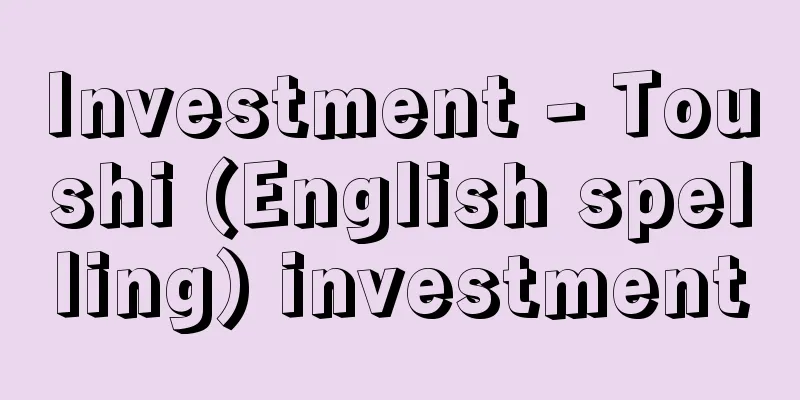
|
An increase in capital stock. Capital stock is made up of three components: (1) machinery and equipment, factory facilities, and offices; (2) housing; and (3) inventory. When a company purchases new machinery or builds a factory or store in order to produce goods and services, this is capital investment. New housing is built as housing investment. Companies hold inventories of raw materials, work in progress, and finished products in preparation for future sales activities, and an increase in this inventory is inventory investment. Thus, corresponding to the types of capital stock, investment can also be classified into three categories: capital investment, housing investment, and inventory investment. Investment, along with consumption, is an important component of gross domestic product (GDP). Household consumption accounts for just under 60% of Japan's GDP, while private and government investment accounts for a small share of approximately 20%. However, what is important to note is that while consumption is stable, investment is quite volatile in nature. This volatility in investment makes the level of economic activity unstable and causes business cycles. For this reason, if the government is seeking to stabilize the economy through aggregate demand management policies, it is important to have a detailed understanding of the determinants of investment. [Toshiyuki Uchijima and Takuo Maeda March 18, 2016] Gross investment and net investment The total amount of new capital stock purchased by a company within a certain period of time is called gross investment. It cannot be said that all gross investment necessarily leads to a net increase in capital stock. Suppose there are 100 pieces of machinery and equipment at the beginning of a certain period, and if left alone, 10 pieces of machinery will wear out. In order to still have 100 pieces of machinery installed at the end of that period, new machines must be installed to replace the 10 that were removed. The investment made to make up for the loss of these 10 pieces of machinery is called replacement investment or depreciation. If a company now makes a gross investment of 40, 10 of that is replacement investment to replace the old machines. The remaining 30 adds new capital stock and increases production capacity, and this is called net investment. In other words, [Toshiyuki Uchijima and Takuo Maeda March 18, 2016] Independent and induced investmentThere are investments that are made in response to the state of the economy and those that are not. Like the former, investments that are triggered by short-term increases in demand are called induced investments, while investments that are made without being directly influenced by short-term demand trends are called independent investments. In Japan, capital investment during the period of high economic growth was mainly of the induced type, but from the 1980s technological progress, particularly in high technology, became more active, and as a result, high-tech related investment, mainly in processing and assembly industries, began to lead the rise in capital investment. This type of high-tech capital investment, like research and development investment, is a typical example of independent investment. [Toshiyuki Uchijima and Takuo Maeda March 18, 2016] Investment and the Business CycleIn terms of business cycle theory, in addition to the Kondratiev wave (ultra-long cycle) caused by technological innovation and with a cycle of about 50 years, the following three business waves caused by investment are well-known. The first is the Kitchen wave (inventory investment cycle, also called the Kitchen cycle) caused by inventory investment, with a cycle of about 40 months. The second is the Jugler wave (capital investment cycle, also called the Jugler cycle) caused by capital investment. The economic life of a company's equipment is said to be about 10 years, so the cycle of the Jugler wave is about 10 years. The third is the Kuznets wave (building cycle, also called the Kuznets cycle) caused by housing investment. Since the life of a building is about 20 years, the cycle is also about 20 years. Kuznets waves usually contain two Jugler waves, and Jugler waves usually contain three Kitchen waves. When the downward periods of these three waves overlap, a larger recession will occur. For more information, please refer to the "Business Cycle" entry. [Toshiyuki Uchijima and Takuo Maeda March 18, 2016] The double effect of investmentInvestment is the engine that drives economic growth. Japan's high economic growth was made possible by companies' eagerness to invest in equipment. The role that investment plays in economic growth is explained by the dual effect of investment. One is the "demand creation effect" as a short-term effect of investment. Investment is an important component of GDP, and when new machines are installed or houses and factories are built, it increases total demand (investment multiplier theory). The other is the "production capacity creation effect" as a long-term effect of investment. Once the installed machines are operational, they increase the capacity to produce and supply goods and services. R. F. Harrod and E. D. Domar constructed a basic theory of economic growth by focusing on the two effects that investment has on both the demand and supply sides of the economy, and this theory is called the Harrod-Domar growth theory (Harrod-Domar model). [Toshiyuki Uchijima and Takuo Maeda March 18, 2016] "Introduction to Macroeconomics" by Iwao Nakatani (1981, Nippon Hyoronsha)" ▽ "Business Cycles" edited by Yasushi Kosai (1984, Kyoikusha)" ▽ "How to Read Economic Data" by Masatoshi Suzuki (Iwanami Shinsho)" ▽ "Reading Economic Indicators" edited by the Asahi Shimbun Economic Department (Kodansha Gendai Shinsho)" [References] | | | | | | | | | |Source: Shogakukan Encyclopedia Nipponica About Encyclopedia Nipponica Information | Legend |
|
資本ストックの増加分のこと。資本ストックは、(1)機械設備、工場設備、オフィス、(2)住宅、(3)在庫の三つから構成される。企業が財・サービスを生産するため、新たに機械を購入したり、工場や店舗を建てたりするのが設備投資である。新たに建築される住宅は住宅投資である。企業は将来の販売活動に備えて、原材料、仕掛(しかかり)品、製品の在庫を保有するが、この在庫の増加分が在庫投資である。このように資本ストックの種類に対応して、投資もまた設備投資、住宅投資、在庫投資の三つに分類される。 投資は、消費とともに国内総生産(GDP)の重要な構成要素である。家計消費は日本のGDPの6割弱を占めるのに対し、民間と政府による投資は約2割とそのシェアは小さい。しかし、重要なのは、消費は安定的であるが、投資はかなり変動的な性格をもっているということである。この投資の変動性は、経済の活動水準を不安定なものにし、景気循環の原因となる。このため政府が総需要管理政策により経済の安定化を図る場合には、投資の決定要因を詳しく知ることがたいせつとなる。 [内島敏之・前田拓生 2016年3月18日] 粗投資(あらとうし)と純投資企業がある一定期間内に新たに購入する資本ストックの全体を粗投資gross investmentという。粗投資のすべてがかならずしも資本ストックの純増につながるとはいえない。ある期間の期首に100の機械設備があり、そのままほうっておくと10の機械が摩滅するとしよう。その期の期末に100の機械を依然として据え付けておくためには、除去した10にかわる機械を新たに据え付けなければならない。この10の除去の穴埋めのための投資のことを更新投資あるいは減価償却という。いま40の粗投資をしたとすると、そのうちの10は機械を補う更新投資である。残りの30が新たに資本ストックを増やして生産能力を高めるのであり、これを純投資net investmentという。つまり、 [内島敏之・前田拓生 2016年3月18日] 独立投資と誘発投資投資には、景気のよしあしに敏感に反応してなされるものと、そうではないものとがある。前者のように短期的な需要の増加に誘発されて行われるのが誘発投資であり、これに対して短期的な需要動向に直接左右されることなく行われる投資を独立投資という。日本においては、高度成長期の設備投資は誘発投資型が中心であったが、1980年代に入ってからは、ハイテクを中心とする技術進歩が活発化し、このため加工組立型産業を中心としてハイテク関連投資が設備投資の盛り上がりをリードするようになった。このようなハイテク化設備投資は、研究開発投資と同様に、独立投資の代表的な例である。 [内島敏之・前田拓生 2016年3月18日] 投資と景気循環景気循環の理論としては、技術革新に起因する約50年の周期をもつコンドラチェフの波(超長期循環)のほかに、投資に起因する次の三つの景気の波が有名である。第一は、在庫投資に起因するキッチンの波(在庫投資循環。キッチン循環ともいう)で、その周期は約40か月である。第二は、設備投資に起因するジュグラーの波(設備投資循環。ジュグラー循環ともいう)である。企業の設備の経済的寿命は約10年といわれ、このためジュグラーの波の周期は約10年である。第三は、住宅投資に起因するクズネッツの波(建築循環。クズネッツ循環ともいう)である。建物の寿命はおよそ20年であるので、その周期も約20年である。クズネッツの波はジュグラーの波を2回含み、ジュグラーの波はキッチンの波を3回含むのが通常である。これら三つの波の下降期が重なると、より大きな不況期が到来することになる。詳しくは「景気循環」の項目を参照されたい。 [内島敏之・前田拓生 2016年3月18日] 投資の二重効果投資は経済成長を推進するエンジンである。日本の高度成長は、企業の活発な設備投資意欲により可能となった。投資が経済成長に果たす役割を説明するのが、投資の二重効果である。一つは投資の短期の効果としての「需要創出効果」である。投資はGDPの重要な構成要素であり、新たに機械が据え付けられたり、住宅・工場が建築されたりすると、総需要を増やす(投資の乗数理論)。いま一つは投資の長期の効果としての「生産能力創出効果」である。いったん据え付けられた機械が稼動すると、それは財やサービスを生産・供給する能力を増加させることになる。このような投資が経済の需要と供給の両サイドに及ぼす二つの効果に着目して経済成長の基本理論を組み立てたのが、R・F・ハロッドとE・D・ドーマーであり、この理論はハロッド‐ドーマーの成長理論(ハロッド‐ドーマー・モデル)とよばれる。 [内島敏之・前田拓生 2016年3月18日] 『中谷巌著『入門マクロ経済学』(1981・日本評論社)』▽『香西泰編『景気循環』(1984・教育社)』▽『鈴木正俊著『経済データの読み方』(岩波新書)』▽『朝日新聞経済部編『経済指標を読みこなす』(講談社現代新書)』 [参照項目] | | | | | | | | | |出典 小学館 日本大百科全書(ニッポニカ)日本大百科全書(ニッポニカ)について 情報 | 凡例 |
>>: François Dominique Toussaint L'Ouverture
Recommend
Tove Jansson
A Finnish female painter and children's autho...
Cavolinia longirostris (English spelling) Cavolinialongirostris
…[Tadashige Nabe]. . … *Some of the terminology t...
Long legs - Ashinaga
〘 noun 〙① Long legs. Also, the person who has them...
Drought resistance
...Drought-resistant plants that can grow in dry ...
al-Nūba, Ṣaḥrā' (English spelling) alNubaSahra
…Official name = Democratic Republic of the Sudan...
Ghost monkey - Ghost monkey
…The New World Capuchin monkey (illustration) of ...
Batrachoseps
...The northern salamander, Salamandrella keyserl...
Shigenobu River
A river that flows through the Matsuyama Plain in...
Order to prosecute - Kisomeirei
When an order for provisional attachment or provis...
Kanpakudo - Kanpakudo
...The route taken on this pilgrimage, from Hakon...
Description (Chinese) - Kisai
…The classic text, the Book of Rites, and the his...
Teaching license - Kyojumenkyo
[Lycentia dokendi = Emergence of a teaching licen...
American Trotter [species] - American Trotter
... Used as a draft horse for ceremonial carriage...
Luppis, G. (English spelling) LuppisG
...An unmanned underwater vehicle equipped with e...
Counterclaim - counterclaim
In the Civil Procedure Law, it is a term used to ...
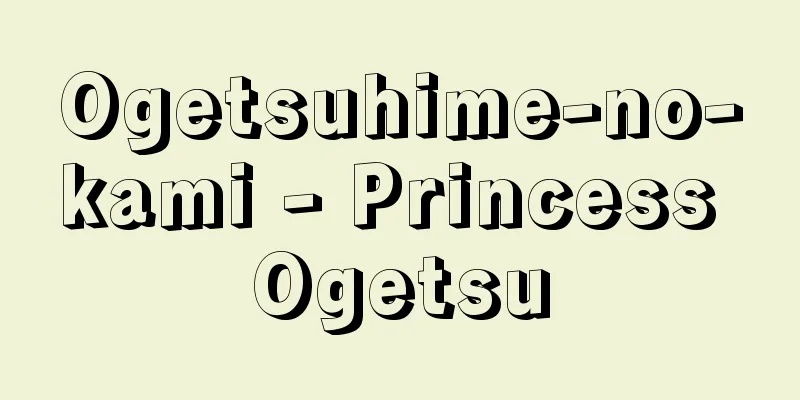
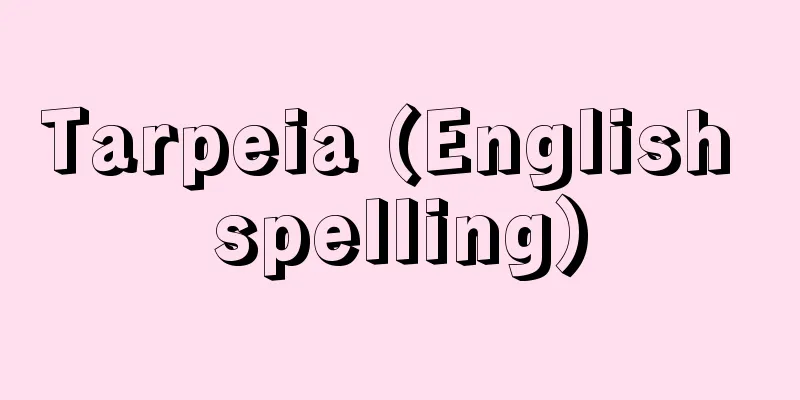
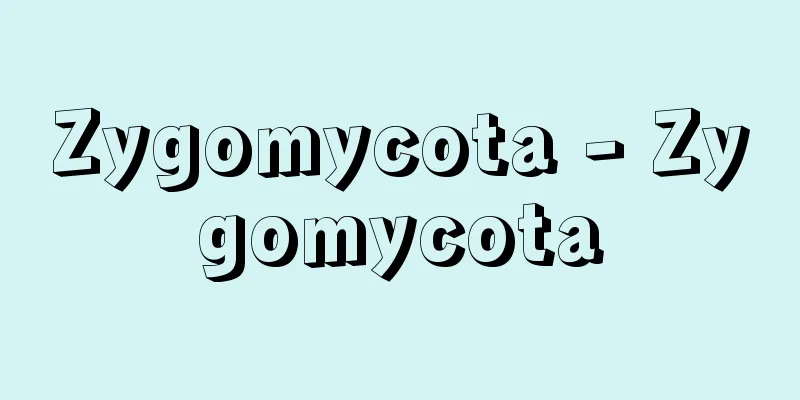


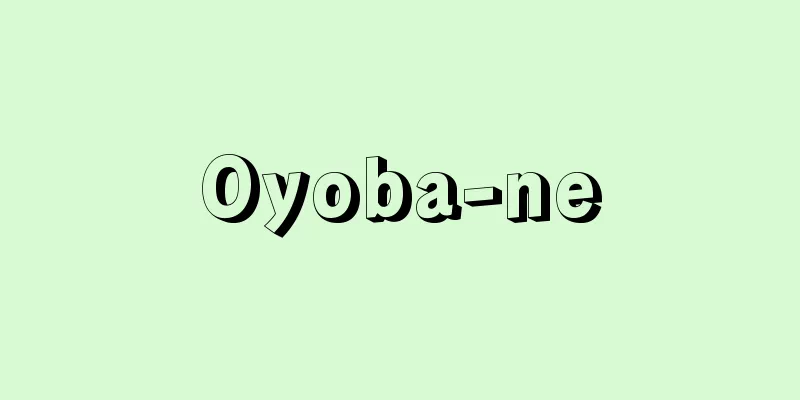



![Kameda [town] - Kameda](/upload/images/67cb3fef9dd67.webp)